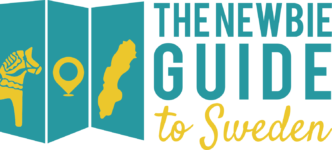People say the first year of everything is actually the hardest. What about the first year living in Sweden? Well, it’s not easy, I must say. But, if you know what to expect, you will know how to deal with that.
Written by Hayu Hamemayu
1. Bureaucracy
Welcome to Sweden! First thing first: get your personnumer and your Swedish ID as soon as possible. These two things are essential for your new life in Sweden. Brace yourself during these times, as Skatteverket will be your number one office to visit. Expect a long queue so come to the office early. Make sure you provide every document they need and double check no document is missed.
Then, whenever you are in doubt, ask!
I know that coming to Skatteverket office over and over can be really exhausting (and boring!), but it is unquestionably important to keep your eyes on the whole process. I personally had quite an experience with Skatteverket when my personnumer application was rejected but I didn’t know it sooner because for some reasons I didn’t receive the rejection letter. Later I knew it was because my residence permit was almost expired at that time so I needed to renew it first to be able to apply for personnumer. Thus, if you found something suspicious with your application, like the duration of the process or no reply after two weeks, do not hesitate to check it in nearby Skatteverket office.
2. Language
Feeling confused with Swedish? Relax. You’re not the only one. Luckily, Swedish has some quite similar words to English and they both are Subject-Verb-Object language, so you can guess the meaning based on familiar words as a starter (be aware of “slut” and “bra” though as they have totally different meanings 😀 ).
My newbie advice is to understand the pattern, especially for simple daily conversation.
When you shop in supermarket, for instance, most of the times the shopkeeper will only ask you two questions. First, “Do you have a member card (medlem)?”. Second, “Do you want/need the receipt (kvitto)” These are both the yes and no questions; so, you can simply answer them with “Ja” or “Nej.” Then, when you shop in any stores other than supermarket, there will be another frequently asked question which is: “Do you need a bag?”. Again, it’s a polar question and you can reply it with “yes” or “no”. Once you’ve understood the pattern, you will reach that level of Swedish I call: “Enough to survive” 😀
3. Food
For you who come from other parts of the world where foods are cooked with various herbs and layer of spices, like me, you may find getting spicy foods in Sweden is bit hard. But again, there’s something to anticipate. Most herbs and spices can be found in the “Livsmedelbutik” or “Livs” which simply means grocery. Search on Google for Livs in your area by using these keywords: “Kina” (Chinese), “Thai”, “Asiatisk” (Asian) or “Arabiska” (Arabic). Or, you can simply go to chain supermarkets and find the Asian section. Their collection is limited but it’s still better than nothing.
4. Weather
The template weather in Sweden isn’t just cold, but also windy. And it’s changing pretty quickly so we need to be always well prepared. Install at least two weather apps in your phone for comparison, then prepare the following weather essentials: wind and rain and snow proof jacket/coat, strong umbrella (the one that doesn’t easily blown away), waterproof shoes/boots, skincare products, vitamins and if you have young kid, that overall dress is definitely a must.
5. Housing
There’s nothing unusual with moving around in Sweden. I’ve been living in Sweden for a year now and I’m going to move to my 3rd place by the end of this month. Finding house or apartment is indeed really challenging, especially during the first year. Thus, soon after your arrival, sign your email address up and queue in as many housing providers as possible, both public or private ones. Then, join Facebook groups, Blocket, BoPoolen or any other housing related services in your area. Beware of the scams though.
No matter how desperate you are, never send any money before you see, in person, the place you’re going to rent.
6. Social Life
Moving to a new place can create lonesomeness sometimes. Before the homesick hits you, check the international hubs in your area regularly. They often create event, gathering, tour, seminar, workshop, or other activities. Use Facebook to discover events near you, or visit interesting places like museums or the state library to spend the day. The libraries in Sweden always have different language sections so you do not need to worry about language. Another option is to do voluntary works. You can find these kind of works in the international hubs’ websites, in your kommun’s website or even your kid’s school websites (this particular one applied to me). By doing this, you will meet new people, experience new things, and create new circles.
Now that you’ve known what to expect during the first year in Sweden, I think you are ready for the second one. And counting! ☺
Hayu Hamemayu is a Lund-based freelance writer whose work has appeared in The Jakarta Post, Media Indonesia, Kompas, Majalah Kartini, and Indonesia Travel Magazine among others. A traveller mommy by nature and random thinker by inclination, she keeps memories in her Instagram @hayuhamemayu and writes her everyday stories in her blog.

Leave a Reply